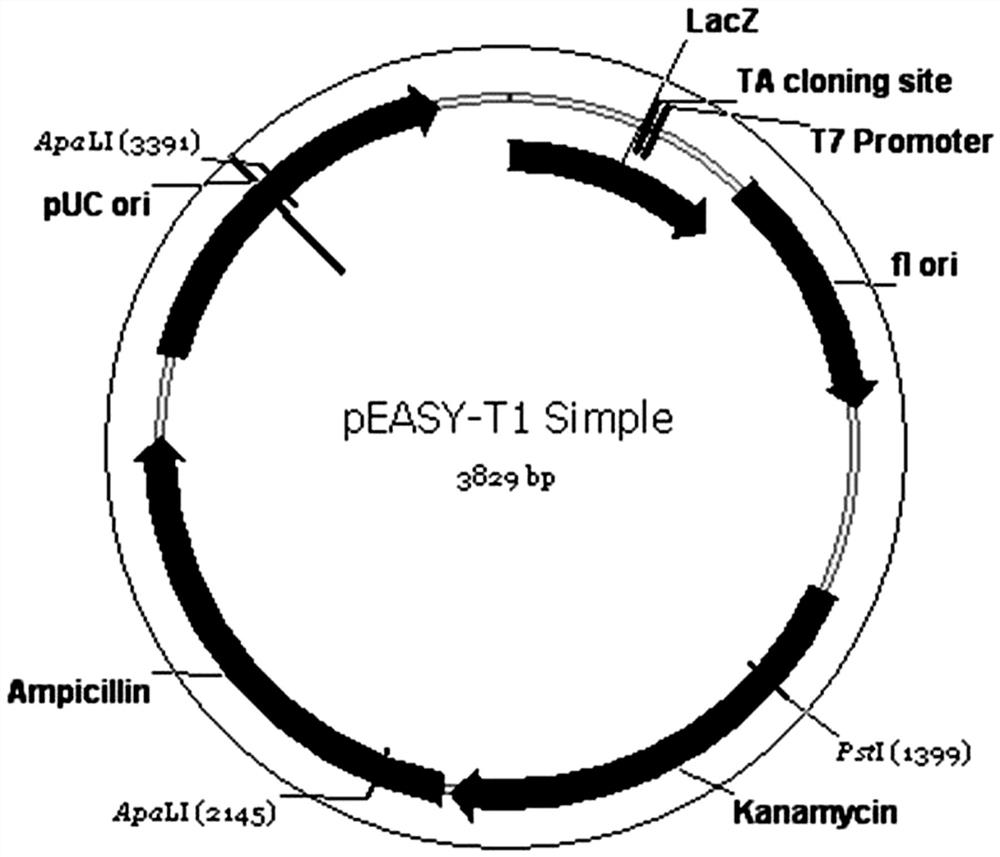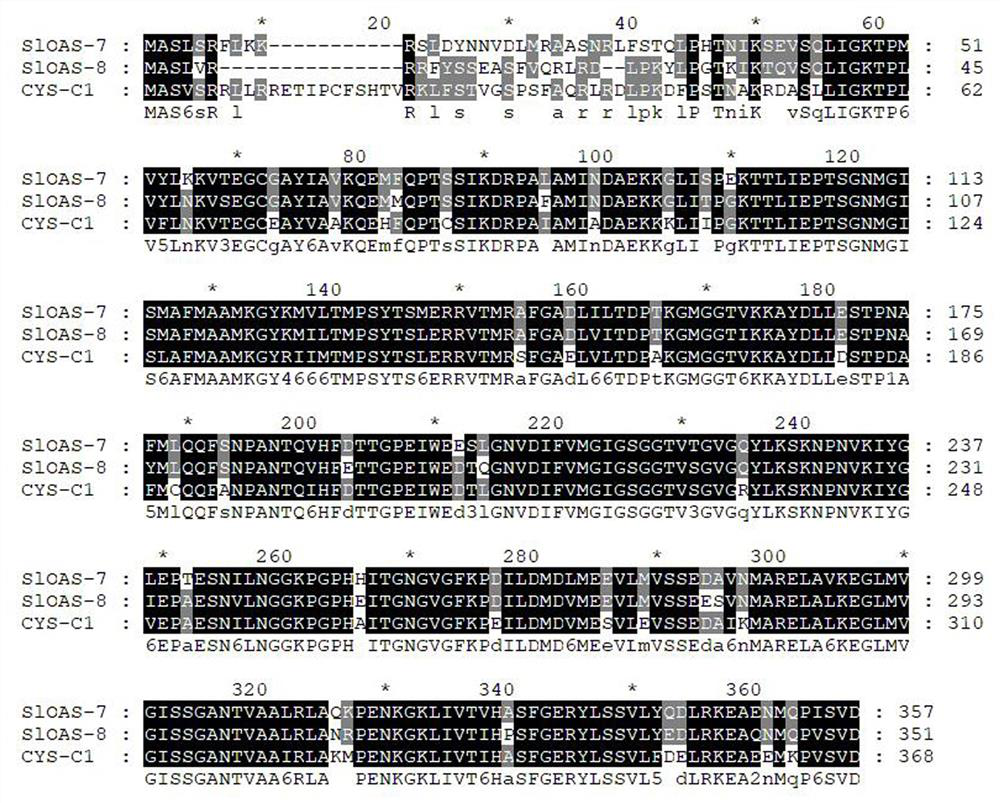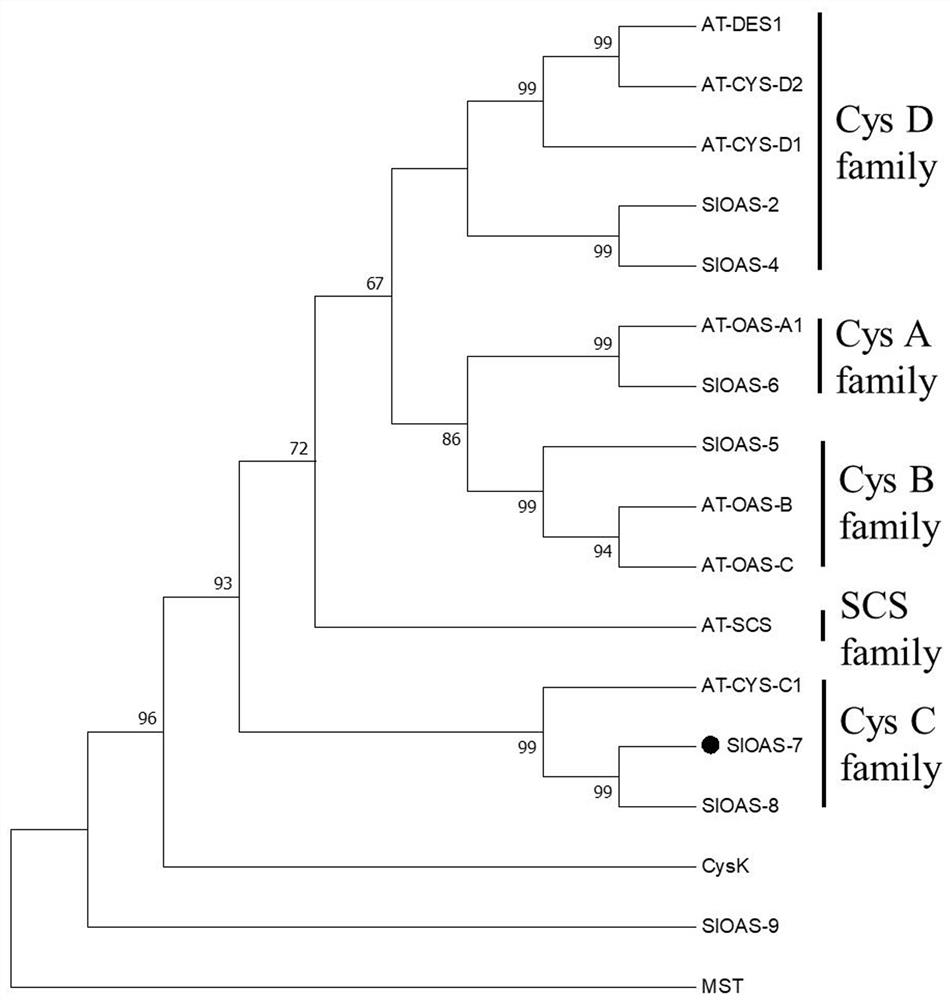Tomato sloas7 gene and its application
A tomato and gene technology, applied in the field of genetic engineering, can solve problems such as OASTL
- Summary
- Abstract
- Description
- Claims
- Application Information
AI Technical Summary
Problems solved by technology
Method used
Image
Examples
Embodiment 1
[0021] Example 1: tomato SlOAS7 Cloning of coding regions of genes
[0022] Utilize the forward primer of nucleotide sequence as shown in SEQ ID No.3 and the reverse primer of nucleotide sequence as shown in SEQ ID No.4, clone from the leaf cDNA of tomato Ailsa Craig SlOAS7 The sequence of the coding region of the gene;
[0023]PCR program: 94°C, 5 minutes; 94°C, 30 seconds; 55°C, 30 seconds; 72°C, 45 seconds; repeat 35 times; 72°C, 10 minutes.
[0024] PCR system: 2× EasyTaq PCR SuperMix (Full Type Gold Company) 25μl;
[0025] Forward primer (10μM) 2μl;
[0026] Reverse primer (10μM) 2μl;
[0027] DNA template 5μl;
[0028] Double distilled water to make up 50μl.
[0029] The above PCR product was directly cloned and connected to pEASY-T1 Simple according to the TA cloning method (such as figure 1 shown); the ligation product was transformed into Escherichia coli Top10, and multiplied in it, and the positive clone was sequenced and screened to obtain the sequence; i...
Embodiment 2
[0030] Embodiment 2: Sequence structure analysis of tomato S10AS7 protein
[0031] Tomato SlOAS7 has the characteristic sequence region of OASTL family proteins: PLP binding region (PXXSVKDR), which has 84% similarity with Cys-C1 protein sequence in Arabidopsis and 91% similarity with SlOAS8 protein sequence in tomato. The result is as figure 2 shown.
Embodiment 3
[0032] Embodiment 3: Phylogenetic analysis of tomato S10AS7 protein
[0033] The results of phylogenetic analysis showed that SlOAS7 belonged to the CysC subfamily, and belonged to the same branch of the phylogenetic tree as Cys-C1 in Arabidopsis. Also belonging to this subfamily in tomato is SlOAS8. The result is as image 3 shown.
PUM
 Login to View More
Login to View More Abstract
Description
Claims
Application Information
 Login to View More
Login to View More - Generate Ideas
- Intellectual Property
- Life Sciences
- Materials
- Tech Scout
- Unparalleled Data Quality
- Higher Quality Content
- 60% Fewer Hallucinations
Browse by: Latest US Patents, China's latest patents, Technical Efficacy Thesaurus, Application Domain, Technology Topic, Popular Technical Reports.
© 2025 PatSnap. All rights reserved.Legal|Privacy policy|Modern Slavery Act Transparency Statement|Sitemap|About US| Contact US: help@patsnap.com



